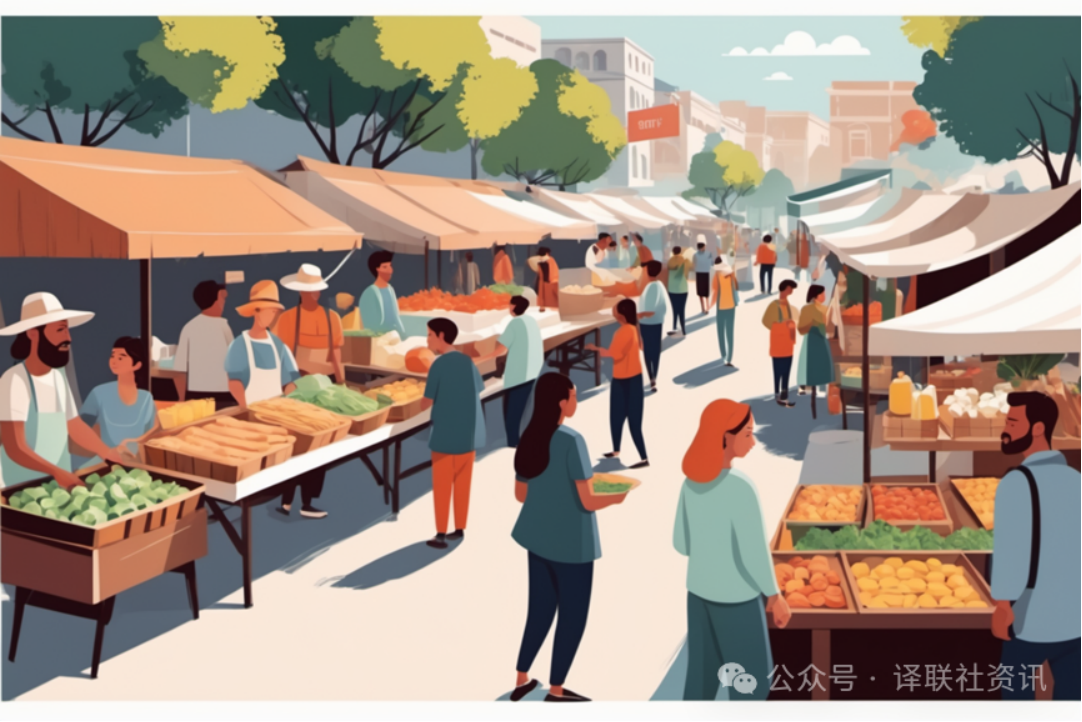Wen/Jia Fangzhou
Biying Cao's work spans a wide range of mediums and themes, encompassing digital art, watercolours, installations and acrylic paintings. Using symbolic narratives, she explores complex emotional and philosophical themes such as love, distance and time, integrating her personal experiences into broader cultural and historical contexts. Through these works, she guides the viewer to establish a dialogue between the individual and the collective, the present and the eternal.
Cultural Symbols in Early Works: Concealment and Memory
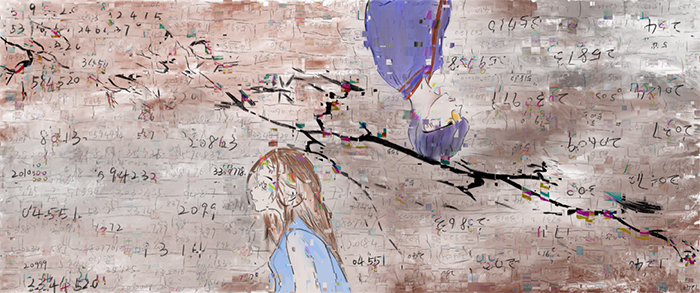
In her digital artwork Secret Love (2022), Cao Biying explores the hidden language of love in the context of Chinese culture. The work uses numerical symbols, such as ‘1314’ to symbolise ‘one life, one lifetime’, which is a common code for expressing love in Chinese culture. By cleverly hiding these digitised words of love behind the lovers' backs, Cao questions whether the memory of a break-up can still carry the meaning of these codes. This multi-layered narrative not only makes the audience rethink the way love is expressed in different cultural contexts, but also brings about a profound reflection on memory and forgetfulness.
This work set the tone for her artistic exploration - a reflection on individual emotions and cultural symbols - and provided a conceptual continuation for her subsequent creations. In her next series of works, Cao Biying began to delve deeper into the sense of distance in human relationships, further expanding her thoughts on love and human connection.
Further Exploring Distance in Relationships: Combining Poetry and Vision
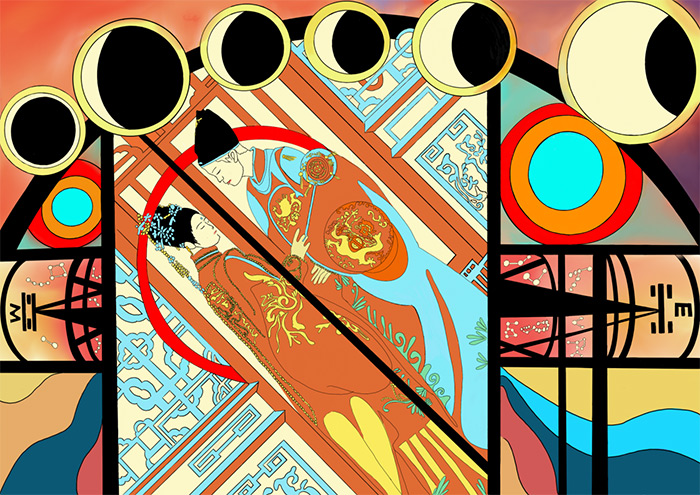
Next, in the watercolour The Farthest Distance (2024), Cao Biying deepens her exploration of distance on both a physical and emotional level. Inspired by the Tang Dynasty poet Li Ye's poem ‘The Eight Arrivals,’ the work expresses the vast differences and intimacy in human relationships through the contrast of ‘east to west, close to distant’. The extreme contrasts in the poem form the basis of her visual expression, with subtle colours that capture the subtle tension between distance and closeness.
The work not only pays homage to traditional Chinese literature through its visual language, but also allows the viewer to reflect on the sense of distance perceived in everyday relationships. Her combination of literature, visual and performance art creates a cross-media experiential space that guides the viewer to re-examine the dynamics between themselves and others on both a sensory and emotional level. This focus on distance and connection also paves the way for her exploration of the themes of time and knowledge.
The Interaction of Time and Knowledge: Reflections on Installation Art
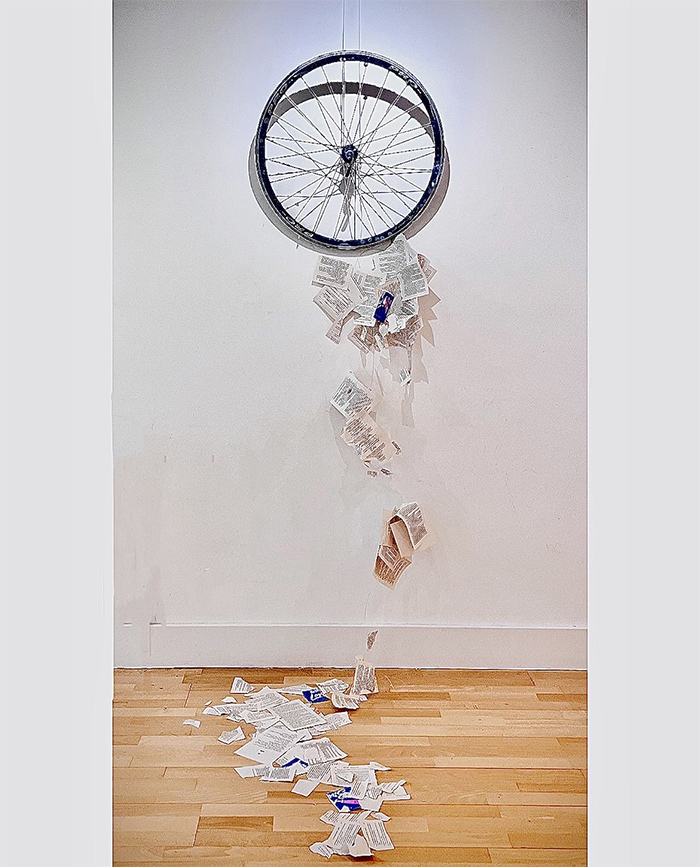
Over time, Cao Biying's work has shifted from exploring personal emotions to larger philosophical considerations. In her 2024 installation Turning Pages of the Wheel, the interaction of time and knowledge becomes a central theme. The hanging wheel and the S-shaped pages symbolise the cycle of time and the accumulation of knowledge, emphasising the continuity of time and the learning process. Through the contrast between the dynamic passage of time and the static pages of the book, the work leads the viewer to reflect on mankind's continuous pursuit of knowledge.
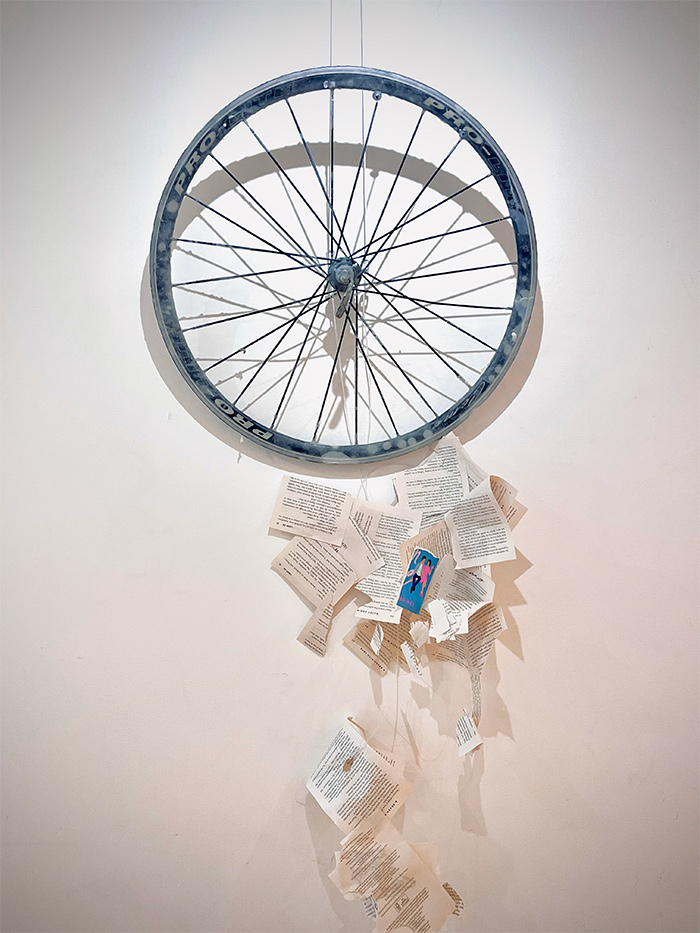
Compared to her previous works, this installation represents a more abstract theme, demonstrating the maturity and deepening of her artistic path. By combining symbolic objects and cultural symbols, Cao Biying uniquely explores the interplay between time and knowledge, and suggests the continuity of learning and knowledge transmission. This deep contemplation of time and knowledge also extends her previous exploration of human relationships and distance, pushing her artistic themes to a broader cultural and philosophical level.
Love in Chaos and Order: Philosophical Symbols in Acrylic Painting
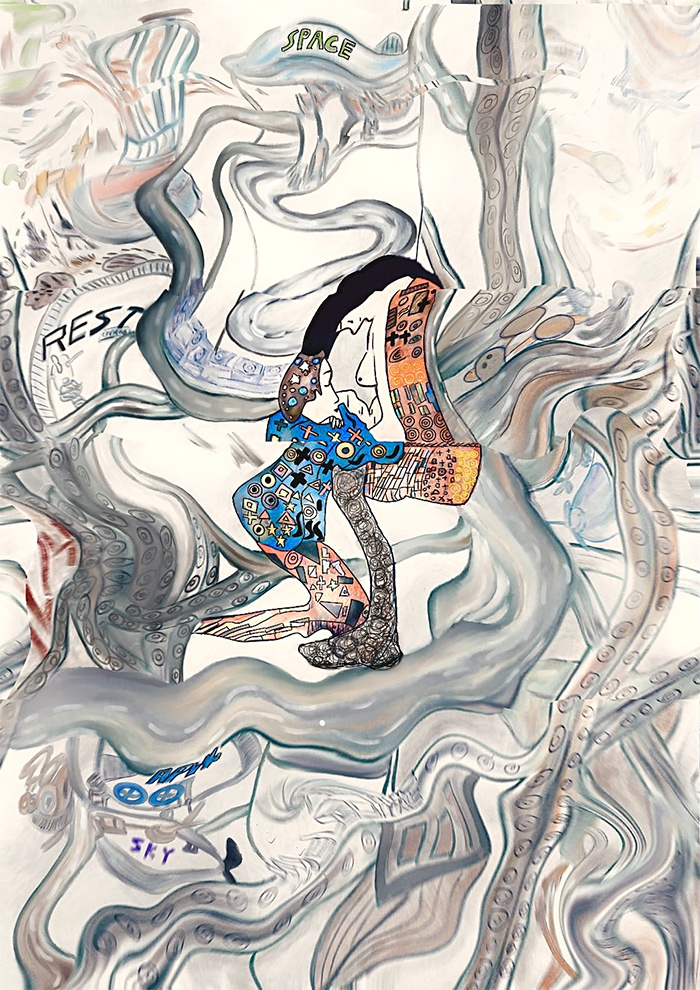
Cao Biying's acrylic painting Love in the Chaos from 2021 explores the power of love in chaos in a more symbolic way. Set against a backdrop of intertwining water pipes, symbolising the chaos and disorder of Taoist philosophy, the lovers in the painting support each other to find a way forward in a world full of uncertainty. Love, as a stabilising force, not only becomes a symbol of mutual support in the painting, but also shows the resilience and hope of human beings in the face of chaos.
Through this work, Cao Biying continues her exploration of human emotions, combining love with the philosophical theory of chaos to express the resilience of love in the face of uncertainty. This exploration echoes her previous reflections on distance and time, creating a multi-dimensional understanding of the nature of love.
Conclusion
Cao Biying's artistic creation is not only a series of independent works, but also a philosophical and emotional exploration process full of coherence. From the hidden expression of personal emotions, to the exploration of distance in interpersonal relationships, to philosophical reflections on time and knowledge, her works show an evolution from the individual to the collective, from the figurative to the abstract. Through a variety of media and symbolic narratives, she bridges the gap between traditional cultural symbols and contemporary art, guiding viewers to deeper thinking on an emotional and philosophical level. Cao Biying's creative path is not only an experimentation of art forms, but also a continuous search for human experience and the essence of the world.
